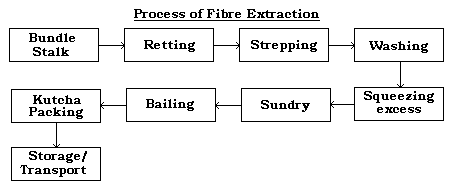UPSC Articles
CCEA approves Mandatory Packaging In Jute Materials
Part of: GS Prelims and GS-III – Economy
In news
- The Cabinet Committee on Economic Affairs has approved that 100% of the food-grains and 20% of the sugar shall be mandatorily packed in diversified jute bags.
Key takeaways
- The decision also mandates that initially 10% of jute bags for packing food grains would be placed through reverse auction on the Gem portal.
- The Government has expanded the scope of mandatory packaging norms under the Jute Packaging Material (JPM) Act, 1987.
- The approval will benefit farmers and workers located in the Eastern and North Eastern regions of the country particularly in West Bengal, Bihar, Odisha, Assam, Andhra Pradesh, Meghalaya and Tripura.
Important value additions
Other Support provided to the Jute Sector
- The National Jute Board has collaborated with National Institute of Design and a Jute Design Cell has been opened at Gandhinagar.
- In order to boost demand in the jute sector, Government of India has imposed Definitive Anti-Dumping Duty on import of jute goods from Bangladesh and Nepal with effect from 5th January, 2017.
- In order to promote transparency in jute sector, Jute SMART, an e-govt initiative was launched in December, 2016 which provides an integrated platform for procurement of Jute sacking by Government agencies.
Jute
- Jute is a rainy season crop.
- Jute requires a warm and humid climate with temperature between 24° C to 37° C.
- Constant rain or water-logging is harmful.
- The new gray alluvial soil of good depth, receiving salt from annual floods, is best for jute.
- Jute is harvested any time between 120 days to 150 days when the flowers have been shed, early harvesting gives good healthy fibers.
- The jute plant’s fibres lie beneath the bark and surrounded the woody central part of the stem.
- To extract the fibres from the stem, the process is carried out in the following stages :














